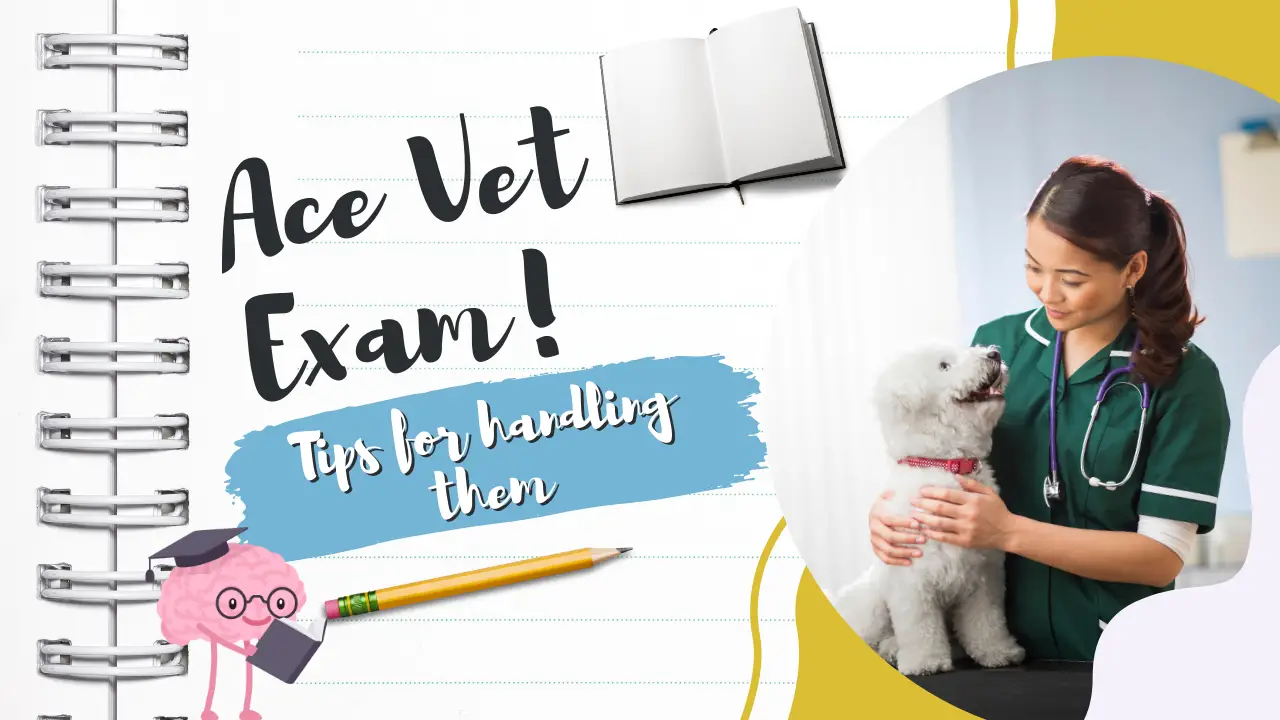As a pet owner, I understand that vet exams can be stressful for both you and your poodle. However, with the right preparation and mindset, you can make the experience smoother and more positive.
In this article, I will share some tips and strategies that have helped me handle vet exams with ease. Whether you have a dog, cat, or another beloved pet, these tips are applicable to all.

What Will You Learn? 👇
Why Are Vet Exams Stressful?
Vet exams can be stressful for pets due to a variety of factors, including:
- New Environment: The unfamiliar sights, sounds, and smells of the vet clinic can be overwhelming for pets.
- Fear of Handling: Pets may feel anxious or uncomfortable with being touched, examined, or restrained by unfamiliar people.
- Previous Negative Experiences: If a pet has had a negative experience at the vet in the past, they may develop fear or anxiety associated with future visits.
Understanding these factors can help us approach vet exams in a way that minimizes stress and maximizes comfort for our pets.

Read our Smart Poodles - Smart Tricks eBook for only $2.99
Dive into a treasure trove of engaging tricks and tips designed specifically for your poodle!
Preparation is Key
Preparation plays a crucial role in ensuring a successful vet exam. Here are some tips to help you and your pet prepare:
- Familiarize your pet with the carrier: If your pet will be transported in a carrier, make it a familiar and comfortable space. Leave the carrier open and accessible at home, and even place treats or toys inside to encourage your pet to voluntarily enter.
- Practice handling and touching: Get your pet accustomed to being touched and handled gently. Start with short sessions at home, gradually increasing the duration and intensity of handling. Reward your pet with treats and praise to create positive associations.
- Acclimate your pet to the car: If your pet is not used to car rides, take them on short trips to familiarize them with the experience. Start with quick drives around the block, gradually increasing the distance and duration. Offer treats and positive reinforcement to make the car a positive place for your pet.
- Schedule regular grooming sessions: Regular grooming sessions at home can help your pet become more comfortable with being touched and examined. Brush their fur, clean their ears, and trim their nails regularly. This will make the vet’s handling during the exam less stressful for your pet.
Choosing the Right Vet
Finding the right veterinarian for your pet is essential for a positive and stress-free experience. Consider the following factors when choosing a vet:
- Recommendations: Seek recommendations from friends, family, or fellow pet owners for reputable and trustworthy veterinarians in your area.
- Visit the clinic: Take a tour of the clinic before your pet’s appointment to assess the environment and the staff’s demeanor. A clean and organized clinic with friendly staff can help create a more relaxed atmosphere for your pet.
- Specializations and Services: Consider the specific needs of your pet. If your pet has a unique condition or requires specialized care, ensure that the vet has the necessary expertise or can refer you to a specialist if needed.
- Communication and Trust: Choose a vet who communicates clearly, listens attentively, and shows genuine care for your pet. Establishing trust and a good rapport with your vet will make the exam process more comfortable for both you and your pet.
During the Vet Exam
Once you arrive at the vet clinic, there are several strategies you can employ to help your pet feel more at ease during the exam:
- Stay calm and relaxed: Pets can pick up on our emotions, so it’s important to remain calm and composed. Speak to your pet in a soothing tone and provide gentle reassurance throughout the exam.
- Bring comfort items: Bring along your pet’s favorite blanket or toy to provide them with a sense of familiarity and security during the exam. These items can help reduce anxiety and provide a positive distraction.
- Use positive reinforcement: Reward your pet with treats and praise during the exam to create positive associations. This can help distract them from any discomfort and make the experience more enjoyable.
- Advocate for your pet: If your pet seems uncomfortable or in pain during the exam, don’t hesitate to communicate this to the vet. Your observations and insights can help the vet adjust their approach and make the exam more comfortable for your pet.
After the Vet Exam
Once the exam is over, there are a few things you can do to ensure a smooth transition back home:
- Reward and praise: After the exam, offer your pet praise and treats to reinforce their positive behavior and cooperation. Celebrate their bravery and let them know they did a great job.
- Monitor your pet: Keep an eye on your pet after the exam to ensure they are behaving normally. If you notice any unusual behavior, such as lethargy or loss of appetite, contact your veterinarian for further guidance.
- Follow-up care: If your pet was prescribed medication or requires follow-up visits, be diligent in providing the recommended care. Follow your vet’s instructions closely to ensure your petreceives the necessary treatment and continues to recover.
We would love to hear about your experiences and any additional tips you have for handling vet exams. Leave a comment below and share your insights!
Marko is the founder and author at PoodleHQ, where he blends profound expertise with formal training in Animal Behavior and Canine Genetics. With multiple generations of poodles under his care, he’s a breed connoisseur, honored with the Canine Care Excellence Award and lauded by the International Pet Enthusiasts Association.

